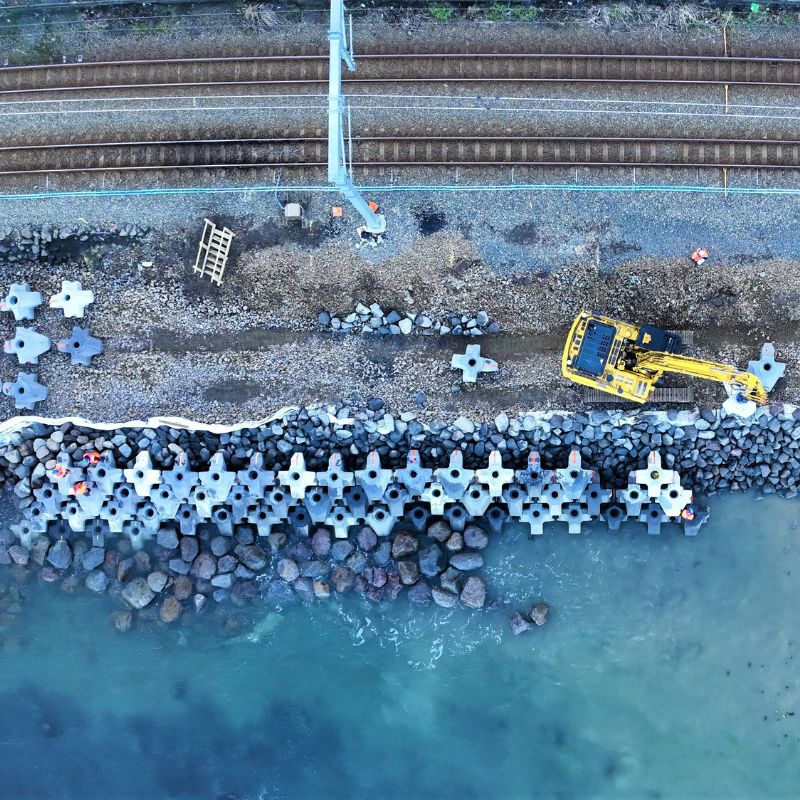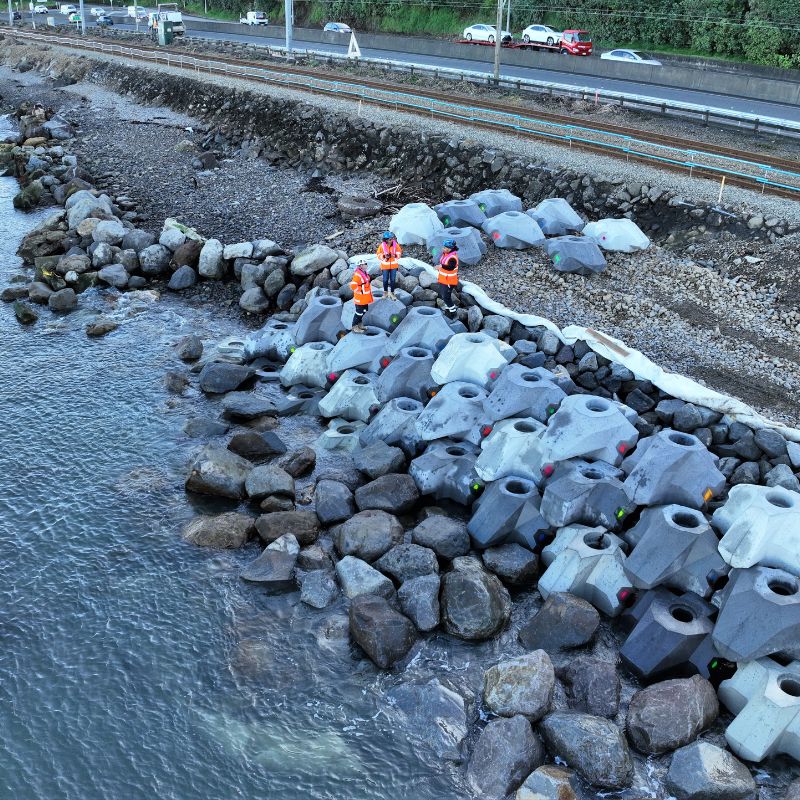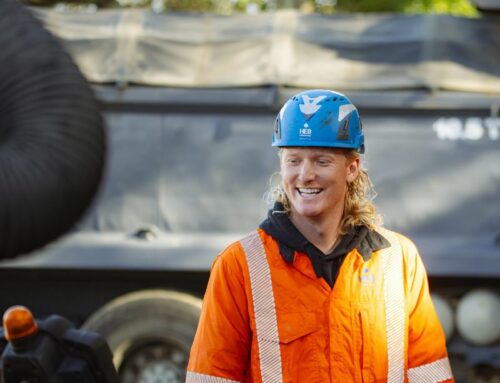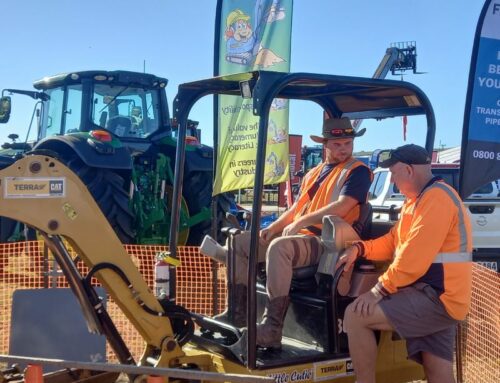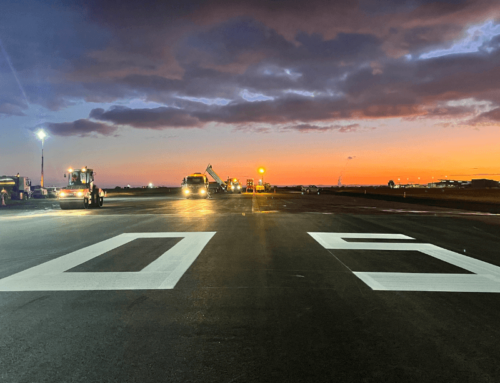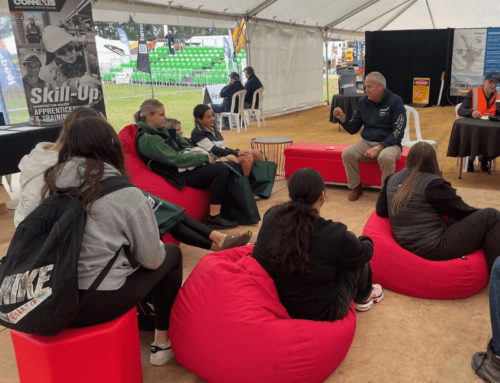A major project on the western side of Wellington Harbour is creating rocky islands to house wildlife and using state-of-the-art interlocking concrete blocks to armour the coast against erosion, protect a vital rail and road link from the impacts of climate change and provide safe passage for cyclists and walkers.
Sound too good to be true? It’s not. Seabirds are already flocking to the newly-built offshore islands, and progress has arrived for the Te Ara Tupua project, which will span 8 km connecting Lower Hutt with Wellington City alongside State Highway 2.
This project has many key players, including engineer and revetment expert James Andrew, who is working closely with the project team and in partnership with iwi mana whenua Taranaki Whānui ki te Upoko o te Ika, and Ngati Toa Rangatira to make the project happen.
As ‘Discipline Manager’ for Te Ara Tupua Alliance, he is playing a critical role in a project that will future-proof and revolutionise the way Wellingtonians interact with their city’s harbour.
His title might sound like something out of a Victorian-era boarding school, but his work is ultra-modern, involving lending specialist expertise as one of three project managers making the seawall with the aid of everything from excavators and barges to submersible drones.
The Te Ara Tupua project he is working on is equal parts transport link and resilience-building, involving construction of a cycleway and walkway between Wellington and Lower Hutt and creation of the seawall from Nguaranga (Ngā Ūranga) to Petone (Pito-One). It will also provide alternative access for emergency vehicles in cases when State Highway 2 is gridlocked or inaccessible.
“I’m involved in every aspect of the job – coordinating the teams, health and safety, environmental aspects and scheduling,” James says.
“If you were to sum up my job in a few words, I’m basically a coordinator with technical skills.”
James and the Alliance team are currently constructing the second stage of the project, which involves creation of the seawall and 4.5 km cycling and walking link between Petone and Ngauranga. The first stage of the project is on track to be open later this year and involves the creation of a 3.5 km cycling and walking link from Petone to Melling.
James says there are around 100 staff involved in construction daily and a large number of engineers, planners and other back-office staff who are “performing miracles” in support.
“This project is going to make a real difference for cycling, walking and access to the harbour for Wellingtonians.”
Leaving a legacy for Wellington
James has worked in civil construction for 18 years and says seeing the difference a project makes is one of the highlights of the job. Likewise, the start of a project can be exciting as it’s often the culmination of months or even years of design work and planning.
“Seeing the arrival of the first barge load of rocks from the South Island for construction of our Te Ara Tupua seawall was a special moment because it meant we could start the revetment between Ngā Ūranga and Pito-One.”
James is conscious of public interest in high-profile projects and says mitigating environmental impacts is top of mind, particularly when a project is in a sensitive environment like Wellington Harbour.
Among the innovations being used for the seawall on Te Ara Tupua are specially designed concrete ‘Xblocs’. The blocks, poured in the shape of an ‘X’, are easy to interlock and can be stacked to create a seawall with a steeper incline than is possible using rock boulders. This reduces the seawall’s physical footprint and impact on the marine environment, James says.
Using Xblocs for some portions of the seawall means less stone has to be quarried and brought in from around the country. The cultural design built into them, dreamed up by Māori artist Len Hetet with input from ecological specialists, creates a texture that is easy for shellfish, kelp and algae to attach to, helping the environment regenerate quickly.
There are many other environmental mitigation works being done alongside Te Ara Tupua, James says, including the creation of two small rocky offshore islands to provide a temporary home for birdlife impacted by the project.
He says the islands, completed earlier this year, have already become hives of twittering activity for gulls, shags and oyster catchers, as well as a temporary home for the odd seal that hauls itself up onto the rocks to rest.
Wind, rain and marine life
Wellington has a reputation for wild and windy weather and the harbour can be particularly exposed – especially during winter. However, James says the team has been lucky so far.
“We’ve had two months of almost no wind. My desk has a window looking out at the harbour and it’s really good to get that quick check on the weather and how it’s affecting the waves. If our people and machinery have to get off site due to wind and ocean swell we have a plan in place – thankfully we haven’t had to yet.”
Working alongside the harbour has other perks too, James says.
“It’s a super interesting office. We see seals playing sometimes and I fully expect to see some dolphins during our time here.”
A satisfying career with variety and opportunity for all
James says projects like Te Ara Tupua are one of the reasons he has enjoyed the industry for the best part of two decades.
After completing a Bachelor of Engineering degree at Auckland University, he started out in a summer job working on the old State Highway 20 through Mt Roskill.
“That was the one before Waterview Tunnel was built,” he recalls.
He was a site engineer on the project and spent half his time in the field and half his time planning. In the years since he’s worked on a smorgasbord of motorway projects, taking on more senior roles and gaining management experience as time has gone on.
“The industry has so many strange and wonderful moving parts. You’re never stuck in a role doing the same thing – you’re always doing something new.
“Te Ara Tupua is completely different to what I’ve done previously. I’ve never worked in the sea before so I’m still learning new things all the time.”
He encourages anybody considering a career in civil construction to take a chance on the industry.
“If you’re interested in building and making things work, interested in learning and interested in working with people, then it’s for you.”
Work on Te Ara Tupua will continue through to 2026; a finish date that coincides with the planned opening date for an adjoining Let’s Get Wellington Moving project to complete a cycling and walking link along Hutt Road and Thorndon Quay into the centre of Wellington. The 2026 finish also aligns with the 2027 completion date for Te Ara Kairangi Riverlink, which will improve walking and cycling and flood protection along the Hutt River at the northern end of Te Ara Tupua.
Keen to get hands on and build one of the capital’s vital resilience projects? Check out the jobs on offer >>
By the numbers – Te Ara Tupua
- Around 144,000 tonnes of rock will be used during construction of the seawall.
- 6,800 Xblocs weighing 2.6 tonnes will be used to armour the coast in some sections.
- The project includes a cycleway and walkway linking Wellington and Lower Hutt.
- Two offshore islands for seabirds have been created using 12,000 tonnes of rock.

